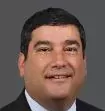Yesterday, the Federal Reserve announced additional actions to support the U.S. economy, which included expanding its Term Asset-Backed Securities Loan Facility ("TALF 2020") to include legacy commercial mortgage-backed securities (CMBS). According to the updated term sheet that accompanied the Federal Reserve's April 9, 2020 announcement, eligible collateral for the TALF 2020 program will now include triple-A rated classes of CMBS issued prior to March 23, 2020. The requirements for CMBS to be eligible under the TALF 2020 program include that the real property securing the underlying mortgage loans must be located in the United States or one of its territories, all or substantially all of the underlying mortgage loans must have been originated by a "U.S. company" (as defined in the updated term sheet) and the issuer of the CMBS must be a "U.S. company."
The updated term sheet excludes single-asset single borrower (SASB) CMBS and commercial real estate collateralized loan obligations (CRE CLOs).
While the addition of legacy CMBS is a welcome change to the TALF 2020 program, some questions remain as to whether further adjustments will be necessary to have the desired effect on the CRE markets. Some industry participants have questioned why the updated term sheet excluded new issue CMBS, SASB CMBS and CRE CLOs. It may also be questioned why the updated term sheet would include static collateralized loan obligations (CLOs) but exclude static/slightly managed CRE CLOs. Many recognize that the original term asset-backed securities loan facility program established in 2008 ("Original TALF") was used to finance much more legacy CMBS than new issue CMBS and that Original TALF financing availability for legacy CMBS had a positive impact on the CMBS secondary market which, in turn, helped restart new CMBS lending and issuance. The inclusion of only legacy CMBS suggests that the Federal Reserve has decided, for now, that is all that is required for the current CRE market, but adding new issuance CMBS, SASB CMBS and CRE CLOs would benefit, and may ultimately prove necessary for, the broader CRE securitization market.
There may also be a question regarding the requirement that the issuer of the CMBS be a U.S. company. The definition of U.S. company in the updated term sheet requires the business to have significant operations in and a majority of its employees to be based in the United States. Further clarification on how the typical CMBS issuing entity, a common law trust with no employees, meets the U.S. company definition would be helpful.
For further details regarding the TALF 2020 program, please see our prior post.
The post Legacy CMBS Added as Eligible Collateral under TALF Program appeared first on Retained Interest.
Visit us at mayerbrown.com
Mayer Brown is a global legal services provider comprising legal practices that are separate entities (the "Mayer Brown Practices"). The Mayer Brown Practices are: Mayer Brown LLP and Mayer Brown Europe – Brussels LLP, both limited liability partnerships established in Illinois USA; Mayer Brown International LLP, a limited liability partnership incorporated in England and Wales (authorized and regulated by the Solicitors Regulation Authority and registered in England and Wales number OC 303359); Mayer Brown, a SELAS established in France; Mayer Brown JSM, a Hong Kong partnership and its associated entities in Asia; and Tauil & Chequer Advogados, a Brazilian law partnership with which Mayer Brown is associated. "Mayer Brown" and the Mayer Brown logo are the trademarks of the Mayer Brown Practices in their respective jurisdictions.
© Copyright 2020. The Mayer Brown Practices. All rights reserved.
This Mayer Brown article provides information and comments on legal issues and developments of interest. The foregoing is not a comprehensive treatment of the subject matter covered and is not intended to provide legal advice. Readers should seek specific legal advice before taking any action with respect to the matters discussed herein.






